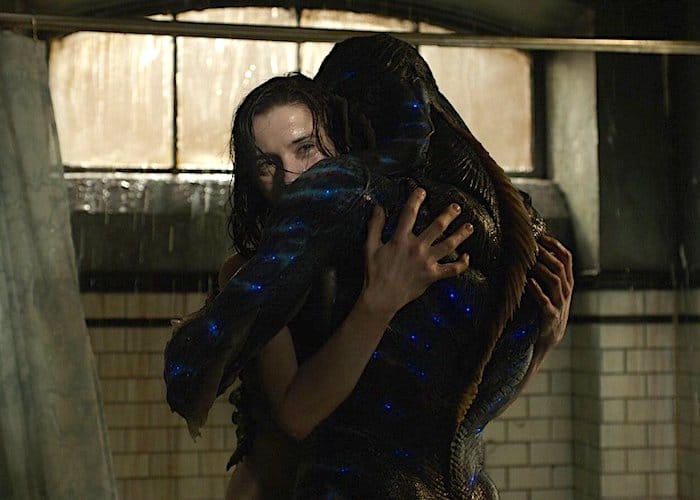By Myrto Katsouli,
Since March is the month dedicated to the Academy Awards, I decided to write about a movie that had high critiques and a plethora of nominations (and not only). I am talking about The Shape of Water (2017), which is an unexpected semi-fictional storyteller that tries to depict the power of true love in a very inconvenient time and space spectrum. In fact, in the 90th Academy Awards, The Shape of Water had been nominated in thirteen categories, managing to win four Oscars (for Best Picture, Best Director, Best Production Design, and Best Original Score), as well as seven nominations at the 75th Golden Globe Awards (won for Best Director and Best Original Score), twelve nominations at the 71st British Academy Film Awards (won three awards, including Best Director), and fourteen nominations at the 23rd Critics’ Choice Awards (won four awards). So, as you can probably see, this movie was a phenomenon, back in 2017, while still remaining relevant, even to this very day.
Dating back to 1962 in Baltimore, a mute woman named Elisa Esposito (Sally Hawkins) working as a cleaning lady in the headquarters of NASA comes across a one-of-a-kind “notorious” and “dangerous” water creature (portrayed by Doug Jones). While being kept in captivity, the cleaning lady approaches it kindly in her unique way and they end up creating a very special bond. One day, the cleaning lady organizes an escape mission with her best friend, Zelda Delilah Fuller (Octavia Spencer), another cleaning lady who was an Afroamerican (we will see below why that fact mattes), and her inseparable gay neighbor, Giles (Richard Jenkins).
They all together manage to free the creature and take it safely to the cleaning lady’s house. However, the mission did not go as planned, since the head-chief of NASA, Richard Strickland (Michael Shannon), started to chase and interrogate all the working staff in order to catch those who took his valuable creature. Its value lies in the fact that it can heal physical wounds through its fishy-covered, but human-like male body. Just like a god, who was praised, as said, by the Egyptians.

Despite the investigation that the chief conducts, Elisa and Zelda manage to remain unsuspected, since the mute is considered incapable of committing such crime, and the black woman is presumed of lower mental and physical capacity. That is also because, in the America of the ’60s, color discrimination and racism, in general, were not yet extinguished from society. The film gives the audience the bigger picture of these strong beliefs, which show how the white superiority mentality annihilates every other human existence and how the social theory of “white perfectionism” is only a superficial image, while the society’s grounds suffer mutely.
Going back to the story, the cleaning lady keeps the creature in her bathtub and cares for it daily. She makes imaginary scenarios about them being in love and ends up yielding passionately to her lust. They find a special way to communicate and express their feelings since neither of them can speak verbally. They connect their minds and thoughts, and the creature becomes very vindictive of his love.
While the research continues for the chief, he becomes obsessed about finding the stolen gem and he starts threatening the cleaning lady while being obsessed with her as well. At the end of the film, the two ladies are betrayed by Dr. Robert Hoffstetler (Michael Stewart Stuhlbarg), who was a spy from Russia and who saw them on the run. The chief, after finding out his true identity (that Robert Hoffstetler was actually named Dimitri Mosenkov), tortured him to find out the truth behind the Amphibian Man’s disappearance. Being embarrassed that the two ladies tricked and outsmarted him, he rushes into the cleaning lady’s house, only to find out that she was gone along with the creature. She was taking him back in the sea where he belonged, but the chief caught them in the act, so he shoots the creature in vengeance. The lady stands upfront and takes the shot for her love, a shot that leads to her death.

The creature, however, gets angry with the chief. He lights up his whole body and fatally attacks the man that took away his woman. He then lifts up her dead body, they fall together into the sea, and he blows her with a kiss, only to restore her from her death, but to live happily ever after, both as sea creatures, in their own world.
This film may not be a typical love story or a typical romantic drama, because it presents the true nature of love. Our social surroundings or the place we are in may not be ideal for our love to flourish, but if we are dedicated enough — not blinded, however —, everything is possible, and we can create an unmeasurable bliss. Our everyday problems and general difficulties will always restrain us from feeling carefree, but it lays upon us how we will surpass the hurdles and find who we are, who we want to be, and whom we share our life with.
In any case, The Shape of Water explains perfectly with a great motion the social standards of the ’60s, while including an unexpected love momentum that melts every viewer’s heart and makes them feel disgusted about the general stereotypes that society sets from time to time. If you have not watched the film already, I definitely recommend giving it a shot, in order for you to face the ugly truth of genuine and unconditional love.
References
- “The Shape of Water, from Guillermo del Toro, is a beautiful adult fairy tale about a fish-man”, vox.com, Available here
- “The Shape of Water movie review”, rogerebert.com, Available here
- “Review: ‘The Shape of Water’ Is Altogether Wonderful”, nytimes.com, Available here




